-
Plant virus to make Ebola detection more accurate
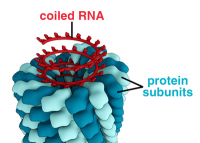
In the past, Ebola diagnostic tests, or assays, have been considered reliable only up to a point. The Ebola virus does not use DNA to store its genetic code. It uses a chemical cousin, called RNA, and extracted RNA degrades easily; one little mistake at the start of a test can ruin the whole thing. Novel process uses a plant virus and may ultimately make Ebola testing more accurate.
-
-
Scientists create malaria-blocking mosquitoes
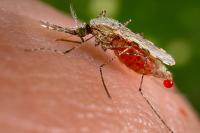
Using a groundbreaking gene editing technique, scientists have created a strain of mosquitoes capable of rapidly introducing malaria-blocking genes into a mosquito population through its progeny, ultimately eliminating the insects’ ability to transmit the disease to humans. The technique holds the promise of eradicating a disease that sickens millions annually.
-
-
Study finds that Ebola vaccine is safe, stimulating strong immune responses
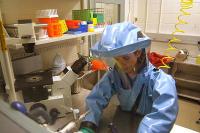
A clinical trial of a new Ebola vaccine that resulted from an unprecedented global consortium assembled at the behest of the World Health Organization (WHO) has found that it is well tolerated and stimulates strong immune responses in adults in Mali, West Africa and in the United States. If the vaccine is ultimately found to be safe and effective, it could offer crucial protection for contacts (family members, neighbors, etc.) of patients with confirmed Ebola disease in future epidemics, thereby helping to interrupt transmission. Larger trials of the vaccine sponsored, by GSK Biologicals, have already begun.
-
-
Novel statistical model maps lethal route of Ebola outbreak
The traditional method to track disease spread is contract tracing, in which health workers interview patients and everyone they came into contact with. Contact tracing, however, is highly labor intensive. Using a novel statistical model, a research team mapped the spread of the 2014-15 Ebola outbreak in Sierra Leone, providing the most detailed picture to date on how and where the disease spread and identifying two critical opportunities to control the epidemic. The result matches with details known about the early phase of the Ebola outbreak, suggesting the real-time value of the new method to health authorities as they plan interventions to contain future outbreaks, and not just of Ebola.
-
-
Killer bees send six to hospital in Arizona
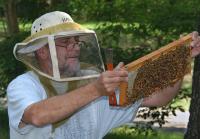
The Maricopa, Arizona fire department said six people were hospitalized on Saturday afternoon after a swarm of bees attacked residents in the Rancho El Dorado subdivision. The bees swooped down on residents of a two-block area in the subdivision about 5 p.m. Both kids and adults ran screaming for cover. Experts say the bees are a strain of the Africanized honeybee, also known as the killer bee, which is a crossbreed between the European honeybee and the African honeybee.
-
-
Centralized leadership, major reform needed to bolster U.S. biodefense
A comprehensive report on U.S. biodefense efforts calls for major reforms to strengthen America’s ability to confront intentionally introduced, accidentally released, and naturally occurring biological threats. The report details U.S. vulnerability to bioterrorism and deadly outbreaks and emphasizes the need to transform the way the U.S. government is organized to confront these threats. Recommendations include centralizing leadership in the Office of the Vice President; establishing a White House Biodefense Coordination Council; strengthening state, local, territorial, and tribal capabilities; and promoting innovation through sustained biodefense prioritization and funding.
-
-
$100 million NIAID contract to SRI International to develop radiation exposure treatment

SRI International has been awarded a resource contract of up to $100 million over five years by the National Institute of Allergy and Infectious Diseases (NIAID), part of the National Institutes of Health, for the development of products to mitigate or treat acute or delayed effects of radiation exposure.
-
-
Study: Persian Gulf could experience deadly heat
Detailed climate simulation shows that the Persian Gulf region would likely cross the threshold of survivability unless mitigation measures are taken. That tipping point involves a measurement called the “wet-bulb temperature” which combines temperature and humidity, reflecting conditions the human body could maintain without artificial cooling. That threshold for survival for more than six unprotected hours is 35 degrees Celsius, or about 95 degrees Fahrenheit, according to recently published research (the equivalent number in the National Weather Service’s more commonly used “heat index” would be about 165 F). The researchers say that hot summer conditions that now occur once every twenty days or so “will characterize the usual summer day in the future.”
-
-
Birth tourism in the U.S. delivers complex medical cases in neonatal units
Researchers examined reported “birth tourism” in the United States and how it affects neonatal intensive care unit hospitalization. They found that expectant mothers traveling to the United States with the expressed purpose of giving birth before returning home are presenting more complex medical, social, and financial challenges at a large metropolitan children’s hospital. The researchers documented a higher medical complexity, longer hospital stays, and increased re-hospitalization among babies born to traveling families.
-
-
Web sites offer incomplete information on safely storing firearms in the home
The are four safety measures which should be followed to keep children safe around guns: The guns should be kept locked and unloaded, and ammunition should be stored in a locked and separate location. The vast majority of Internet pages visited by people searching for firearms storage guidance, however, prove to be duds when it comes to giving accurate and complete information on how to keep children safe around guns. Only 2 percent of Web pages with information on firearm storage correctly identified all four practices shown to protect children and adolescents living in homes with guns.
-
-
Pediatricians: Food insecurity ongoing health risk to U.S. children
The latest data show that more than fifteen million U.S. children live in households still struggling with hunger. For the first time, the American Academy of Pediatrics (AAP) is recommending that pediatricians screen all children for food insecurity. In a new policy statement identifying the short and long-term adverse health impacts of food insecurity, the AAP also recommends that pediatricians become familiar with and refer families to needed community resources, and advocate for federal and local policies that support access to adequate, nutritious food.
-
-
One in 8 children in U.S. at risk for measles
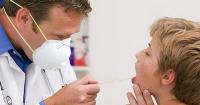
Gaps in measles vaccination rates in the United States place one in eight children at risk for becoming sick from the highly contagious illness, according to an analysis of national vaccination coverage. Measles can lead to pneumonia, encephalitis, hospitalization and occasionally, death. Those who are not vaccinated or are undervaccinated are highly susceptible to becoming ill because measles is very contagious through direct contact and droplets that can spread through the air.
-
-
Researchers develop rapid method for water, air, and soil pathogen screening
Researchers have developed a highly sensitive, cost-effective technology for rapid bacterial pathogen screening of air, soil, water, and agricultural produce in as little as twenty-four hours. “Rapid and reliable pathogen detection in field samples is critical for public health, security and environmental monitoring. Current methods used in food, water or clinical applications rely on labor and time-intensive culturing techniques while activities such as dairy farming, wastewater and runoff treatment necessitates real-time monitoring of pathogens in environment samples,” said one of the researchers.
-
-
Water security test bed to focus on bolstering municipal water security
Water is the foundation for life. People use water every single day to meet their domestic, industrial, agricultural, medical, and recreational needs. After the September 2001 terrorist attacks, water system security became a higher priority in the United States. The Water Security Test Bed (WSTB) at Idaho national Laboratory can be used for research related to detecting and decontaminating chemical, biological, or radiological agents following an intentional or natural disaster. The WSTB will focus on improving America’s ability to safeguard the nation’s water systems, and respond to contamination incidents and to natural disasters.
-
-
Surveillance technology to aid in disease detection, response
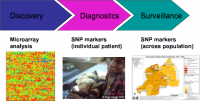
The Ebola crisis has highlighted a need to bolster global surveillance and enhance the capability to react appropriately to further outbreaks, experts say. This should include making use of modern technologies for detecting disease, sharing information in real time and analyzing data. “We cannot afford to wait for the next outbreak of infectious disease before putting effective systems in place to safeguard public health,” says one expert.
-
More headlines
The long view
We Ran the C.D.C.: Kennedy Is Endangering Every American’s Health
Nine former leaders of the Centers for Disease Control and Prevention (CDC), who served as directors or acting directors under Republican and Democratic administrations, serving under presidents from Jimmy Carter to Donald Trrump, argue that HHS Secretary Roert F. Kennedy Jr. poses a clear and present danger to the health of Americans. He has placed anti-vaxxers and conspiracy theorists at top HHS positions, and he appears to be guided by a hostility to science and a belief in bizarre, unscientific approaches to public health.
